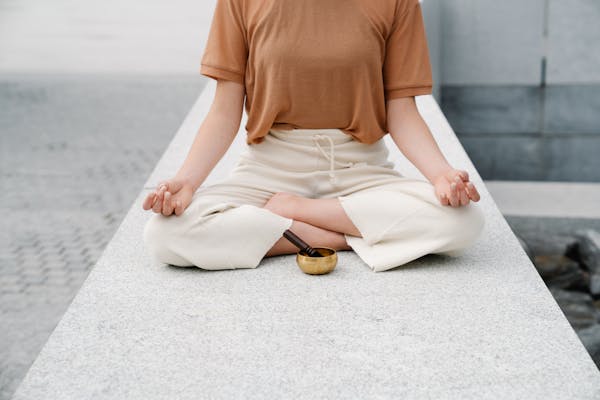Table of Contents
Introduction
Advantage of pranayama- Pranayama is the vital component of yoga practice. It’s not merely controlled breathing, but a transformative art of balancing the life force inside us. Pranayama is greatly rooted in ancient Indian traditions and combines physical, mental, and spiritual dimensions to provide profound health benefits.
Here is an exhaustive guide that will walk you through every aspect of pranayama, its unparalleled advantages, and how you can incorporate it into your life.

1. What is Pranayama?
Pranayama is derived from the Sanskrit words prana (vital energy or life force) and ayama, meaning extension or control. Taken together, the word pranayama connotes the regulation and extension of life energy through breath control.
According to yogic philosophy, breath is not just a physiological function; it is more like the flow of energy that supports life. Pranayama, therefore, becomes the connecting bridge between the body (as an asana practice) and the mind (as a meditation practice), allowing one to connect better with the self.
Through the practice of pranayama, we learn to regulate our inner energy, harmonizing our thoughts, emotions, and body functions.
2. How Does Pranayama Work?
Pranayama is breath control, which is directly connected with the autonomic nervous system. The practice engages the parasympathetic nervous system, making it possible for relaxation and healing to occur in conjunction with soothing the mind.
Conscious breathing allows oxygen to reach cells better, and toxins are removed efficiently. This can improve cellular regeneration, enhance immunity, and also activate the brain’s functions. Different pranayama techniques have a varying effect on the body-some energize and others calm.
3. Advantages of Pranayama
3.1 Physical Benefits
Improved Lung Function
Pranayama increases lung capacity and efficiency by training the diaphragm and intercostal muscles. Practices like Kapalabhati and Bhastrika encourage deep breathing, allowing optimal oxygen exchange and toxin removal.
Cardiovascular Health
Controlled breathing regulates heart rate and reduces blood pressure, alleviating stress on the cardiovascular system. Regular practice improves circulation and supports heart health.
Enhanced Immune System
By reducing stress hormones and oxygenating the blood, pranayama strengthens the immune response, helping the body resist infections and diseases.
Detoxification
Deep breathing aids in the expulsion of carbon dioxide and other toxins, cleansing the body and balancing its internal environment.
3.2 Mental and Emotional Benefits
Stress Reduction
Breath control directly impacts the brain’s stress response. Techniques like Nadi Shodhana and Ujjayi calm the nervous system, significantly lowering cortisol levels.
Improved Focus and Memory
Pranayama sharpens our cognitive functions regarding concentration, memory, and ability to solve complex problems by maximizing oxygen flow to the brain.
Emotional Stability
Pranayama teaches people to control reactions through regulation of the breath, thus cultivating resiliency, patience, and well-balanced emotionality.
3.3 Spiritual and Holistic Benefits
Inner Peace and Mindfulness
Through pranayama, the mind is anchored to the present moment so that mindfulness as well as the sense of inner peace are nurtured.
Meditation facilitation
As a preparatory step, pranayama removes mental distractions and helps to achieve a meditative state easily.
Deepened Self-Awareness
Pranayama aligns the mind and body, thus deepening self-awareness and supporting spiritual growth.


4. Popular Types of Pranayama and Their Benefits
4.1 Nadi Shodhana (Alternate Nostril Breathing)
This soothing technique balances the body’s energy channels, or nadis. It calms the nervous system, reduces stress, and improves mental clarity.
4.2 Kapalabhati (Skull-Shining Breath)
A strong detoxifying practice, Kapalabhati energizes the body, strengthens the lungs, and stimulates digestive organs.
4.3 Bhastrika (Bellows Breath)
This energizing technique improves oxygen levels, boosts metabolism, and invigorates the body.
4.4 Ujjayi (Victorious Breath)
Often used during yoga postures, Ujjayi promotes relaxation, improves focus, and soothes the mind.
4.5 Anulom Vilom (Controlled Breathing)
This technique reduces hypertension, improves circulation, and balances mental and physical energies.
5. Steps to Incorporate Pranayama into Daily Life
Start with Simplicity
Begin with simple techniques such as Anulom Vilom for 5–10 minutes each day.
Develop a Routine
Start pranayama at the same time every day to establish rhythm and control in your life.
Combine with Yoga or Meditation
Practicing pranayama with asanas of yoga or meditation improves its effectiveness.
Select the appropriate environment
Do it in a quiet, ventilated area that will not attract attention.
Progress Gradually
With increased confidence, try more complicated techniques like Kapalabhati or Bhastrika.


6. Scientific Evidence Supporting Pranayama
Modern science has supported the benefits of pranayama. Studies show that:
Pranayama decreases cortisol, thus dealing effectively with stress.
It improves respiration, and thereby helps patients suffering from asthma and COPD.
Practicing it regularly helps to improve heart rate variability and thus contributes to cardiovascular well-being.
It has been beneficial in treating mental illness, including anxiety and depression.
7. Precautions and Best Practices
Start Slow: Beginners should learn under a trained teacher.
Avoid After Meals: Pranayama should be done on an empty stomach for maximum benefits.
Be Conscious of Health Conditions: Some techniques are not suitable for people with certain medical conditions.
Avoid Overexertion: If you feel dizzy or tired, stop and resume when you feel better.
8. Pranayama as a Tool for Emotional Mastery
Emotions play a significant role in our daily lives, often dictating how we react to situations and interact with others. Pranayama serves as an effective tool for emotional mastery by addressing the root causes of emotional turbulence—our uncontrolled thoughts and unregulated breath patterns.
8.1 How Breath Influences Emotions
Shallow, rapid breathing is often linked to anxiety, stress, or anger.
Deep, rhythmic breathing, as used in pranayama, invokes the relaxation response and cultivates emotional balance.
8.2 Pranayama Practices for Emotional Balance
Nadi Shodhana: It brings a balance between both the hemispheres of the brain and encourages one to stay focused and composed.
Bhramari (Humming Bee Breath): Calms agitation and develops an inner feeling of serenity. Using these practices in stressful conditions, people develop their resilience and sustain their emotional equilibrium.
9. The Spiritual Significance of Pranayama
While the physical and mental benefits of pranayama are celebrated, the spiritual aspects of this practice are just as transformative. The yogic principle of self-realization underlies this practice, guiding the practitioner to rise above the mundane and connect with the higher self.
10. Awakening the Subtle Energies
Pranayama is said to stimulate the chakras or energy centers within the body. The free flow of prana is thereby enhanced, improving intuition, creativity, and spiritual awareness.
Path to Meditation
Pranayama serves as a preparatory step for meditation by:
Calming the mind.
Eliminating distractions.
Creating a heightened sense of awareness.
As a result, it becomes easier to enter a meditative state, where true self-discovery occurs.
11. Overcoming Common Challenges in Pranayama
Despite its simplicity, beginners and even seasoned practitioners often encounter challenges while practicing pranayama. Understanding these obstacles and addressing them effectively can ensure a smoother journey.
11.1 Difficulty in Maintaining Focus
Solution: Start with short sessions and then expand.
Guided practice helps keep focus.
11.2 Physical Uncomfort
Solution: Use a cushion or chair for support while sitting. Do your practice in an air-conditioned, quiet area.
11.3 Inconsistent Practice
Solution: Form habit by practicing at the same time every day. Begin small. Commit to only 5 minutes per day, and then increase.
11.4 Impatience with Progress
Solution: Approach pranayama with patience and an open mind. Focus on the process rather than immediate results.


12. Pranayama in Modern Healthcare
With increasing scientific research validating its efficacy, pranayama has found its place in modern healthcare. It is now a complementary therapy for managing various conditions:
Respiratory Disorders: Techniques like Kapalabhati have shown promise in improving lung capacity and alleviating symptoms of asthma and bronchitis.
Hypertension: Various practices like Anulom Vilom have relaxed the mind; thus, resulted in lowering down the blood pressure.
Mental Health: Treatment for anxiety and depression and, more recently for post-traumatic stress disorder (PTSD) would include pranayama.
Modern wellness programs and therapy often include pranayama to be a holistic healing.
13. Pranayama-Adaptations for Different Living Schedules
Versatility is also one of Pranayama’s strengths with which it will become suitable for multiple lifestyles and the needs of one’s life as well. To illustrate, take for examples:
13.1 For Working Individuals
Do shorter Nadi Shodhana or Bhramari breaks at work for de-stress.
Use pranayama at the end of work as stress-relieving in case of heavy working.
13.2 For Athletes
Kapalabhati or Bhastrika to raise stamina and boost oxygenation levels.
Ujjayi to aid concentration during arduous or heavy exercises
13.3 For Elders
Anulom Vilom gentle techniques used for better function of the breathing and relaxation process
Seated pranayama for old age people and immobility.
14. Integrating Pranayama with Yoga and Beyond
While pranayama is a standalone practice, its effects are magnified when integrated with yoga postures and meditation. This holistic approach harmonizes the body, mind, and spirit.
14.1 The Synergy of Asanas and Pranayama
Combine pranayama with dynamic asanas for a full-body workout.
Use breathing techniques to maintain balance and stability in challenging postures.
14.2 Extending Benefits Beyond the Mat
Principles of Pranayama Apply in everyday life, like breathing deeply in tense situations.
Utilize as an aid for concentrated work or studying.
15. Conclusion
Pranayama, or breathing practice, is a powerful discipline having multifaceted benefits in the realms of physical health, mental clarity, and spiritual growth.
Whether in search of reducing stress, expanding lung capacity, or improving emotional equilibrium, pranayama has the simple yet profound solution. Dedicating a few minutes daily will unlock its transformative power toward a healthier, more mindful life.
Discover the age-old wisdom of pranayama and watch it change your life completely. Take that first step today, one breath at a time.
